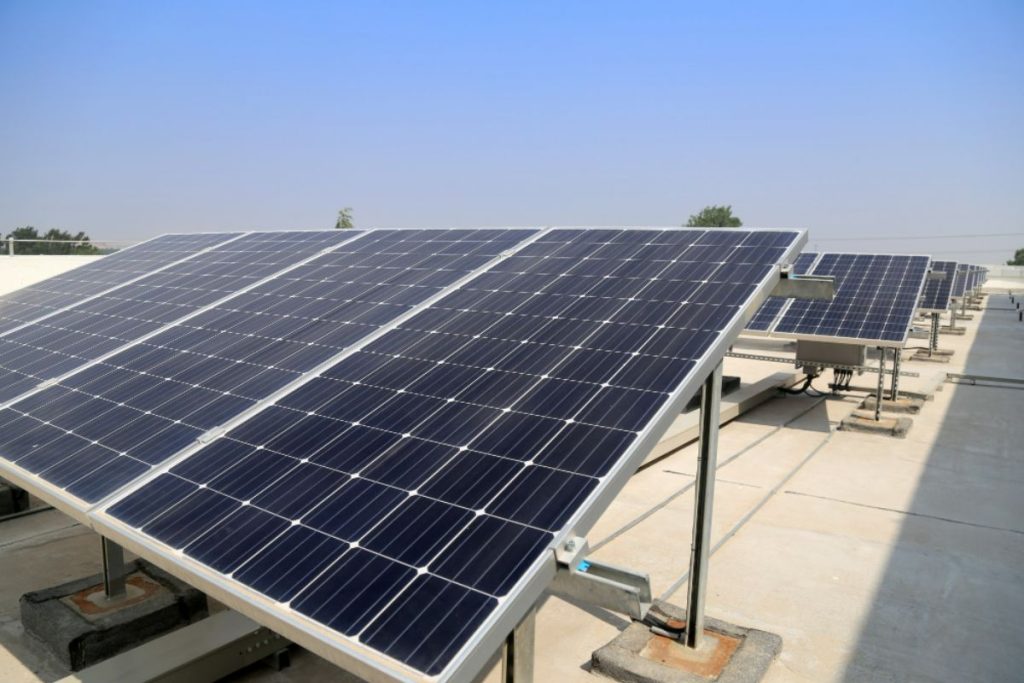What are the advantages of using large-size plastic molding for solar panels?
- Cost-effective production
- Complex designs
- Lightweight materials
- Fast production cycles
- Reduced waste
- Consistent quality
Overview
- Large-size plastic molding is a manufacturing process injecting molten plastic material into a custom mold to create detailed, oversized components.
- This article dives into the transformative advantages of large-size plastic molding for solar panels, spanning from cost-effective production to intricate designs, lightweight materials, fast production cycles, reduced waste, and consistent quality.
Large-size plastic molding represents an advanced manufacturing process, where the molten plastic material is injected into a specially designed mold to craft large and intricate plastic components. This technique enables the production of oversized plastic parts in a single mold.
This process is particularly conducive to efficiently creating large-scale solar panels. Molding entire panels in one unit minimizes assembly requirements, reduces waste, and contributes to cost-effectiveness. In this article, we explore the advantages of large-size plastic molding for solar panels—demonstrating how embracing this innovative technique can revolutionize the solar energy industry.
Cost-Effective Production
It involves manufacturing oversized plastic components through an injection molding process. This allows for the creation of substantial solar panel structures in a single mold.
Cost-effective production is crucial in the solar energy sector to maintain competitiveness and streamline manufacturing processes. This reduces labor and material costs associated with producing components separately.
A solar panel frame seamlessly molded into one piece eliminates the need for additional assembly steps. Thanks to large-size plastic molding, it enables the creation of intricate designs, incorporates support structures, and connects the points within the mold itself. This results in a cohesive and cost-efficient solar panel.
Complex Designs
The plastic molding technique facilitates the production of solar panels with complex designs, including geometric shapes, varying thicknesses, and intricate patterns. These designs can enhance energy efficiency and aesthetics without limiting traditional manufacturing methods, opening up possibilities for innovative solar solutions.
Consider a solar panel with a unique surface pattern designed to capture and redirect sunlight more efficiently. With this procedure, such designs can be effortlessly integrated into the panel to optimize its performance.
Lightweight Materials
Utilizing this type of plastic molding involves the use of lightweight materials like specialized polymers. This ensures the solar panels remain lightweight without compromising structural integrity. The weight impacts transportation, installation, and overall versatility. Therefore, this molding allows for lightweight yet durable panels, easing logistical challenges and expanding potential applications.
Imagine a large-scale solar farm with panels that are not only efficient in energy production but also easy to transport and install due to their lightweight construction. The large-size molding process enables the production of such panels, revolutionizing the solar industry.
Fast Production Cycles
Quick production cycles are essential to meet the growing demand for solar panels, and large-size molding significantly reduces the time required to produce these products. This enables manufacturers to respond swiftly to market needs and opportunities. The process of molding plastic accelerates the production of solar panels by allowing the simultaneous creation of multiple components in a single mold. This technique leads to faster overall production cycles compared to traditional methods.
For example, it helps a solar panel manufacturing facility to streamline their production lines It allows them to produce large-sized panels at an impressive rate. It facilitates the panels’ efficiency, ensuring their timely delivery to meet the increasing demand for renewable energy solutions.
Reduced Waste
Large-size plastic molding emerges as a key contributor to mitigating the environmental impact associated with solar panel manufacturing. Traditional solar panels often require the use of heavy and bulky materials, such as glass and metal frames, which have high energy and carbon footprints during their extraction and manufacturing processes.
In contrast, plastic molding allows for the production of lightweight and durable components that can replace these conventional materials.
Consistent Quality
In the solar industry, maintaining consistent quality is crucial to ensure reliable energy production throughout the panels’ lifespan. The production of the entire panel as a single unit minimizes the risk of defects, ensuring a uniform and reliable end product.
Large-size molding plays a major role in guaranteeing the uniformity of each panel, thereby mitigating the potential for performance discrepancies or premature failures. Picture a solar panel installation where each panel consistently delivers optimal performance, thanks to this molding’s standardized production process—it ensures reliable and sturdy solar panels.
Key Takeaway
Embracing the advantages of large-size plastic molding is a strategic move for manufacturers looking to enhance efficiency, reduce costs, and contribute to sustainable practices in the solar industry.
Ready to revolutionize your solar panel production? Partner with Richfields Corporation, the industry leader in plastic molding. Our expertise, commitment to quality, and advanced facilities ensure your solar panels meet the highest standards of performance and efficiency. Contact us today to schedule a consultation and receive a customized quote.
